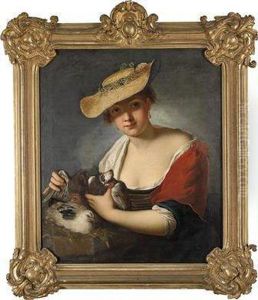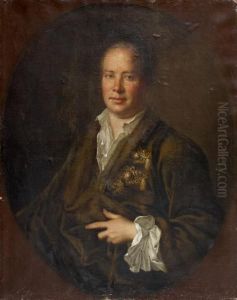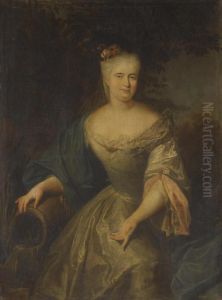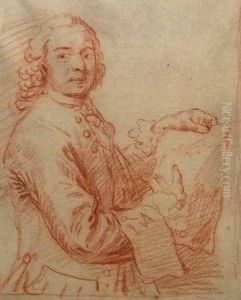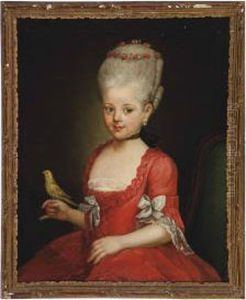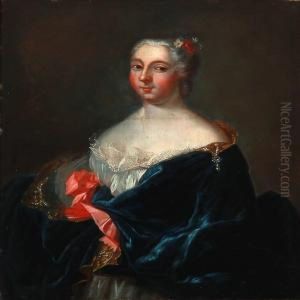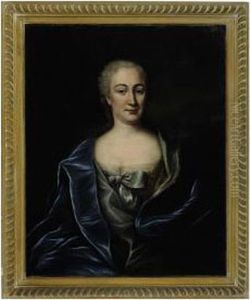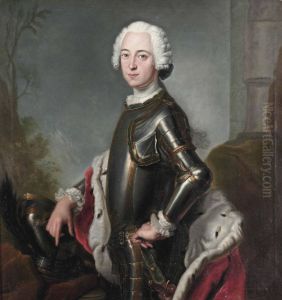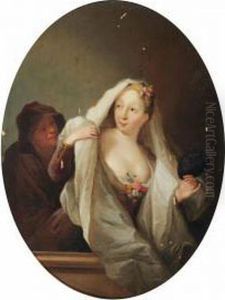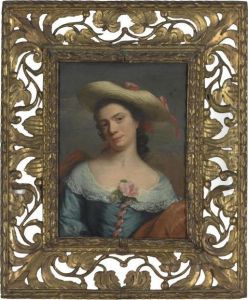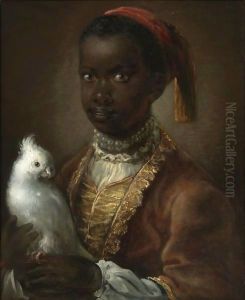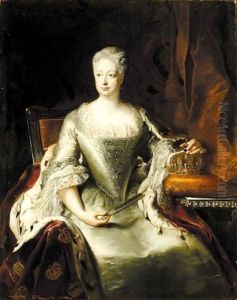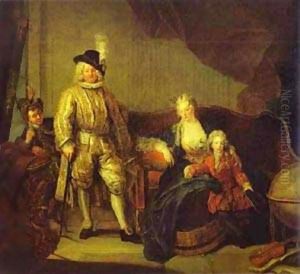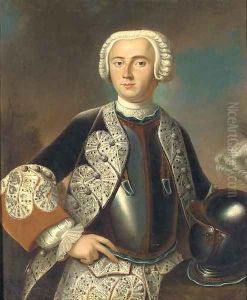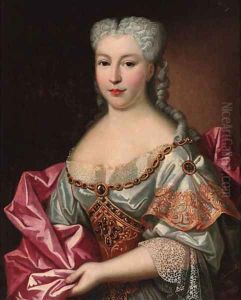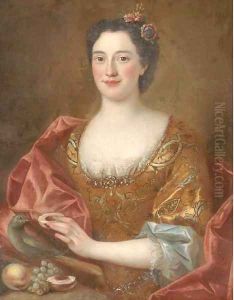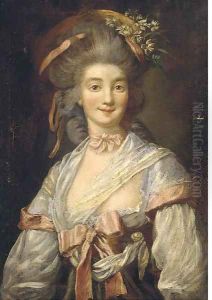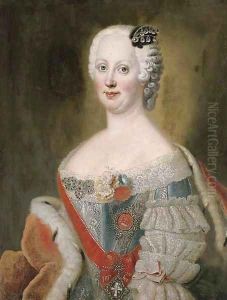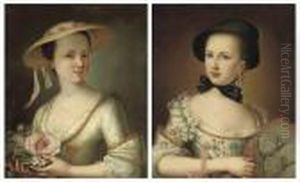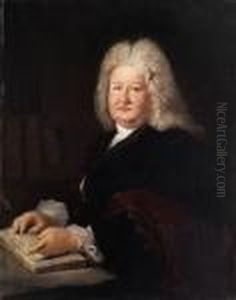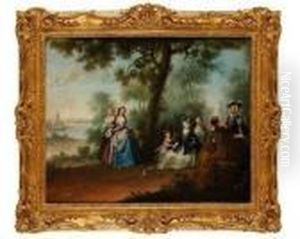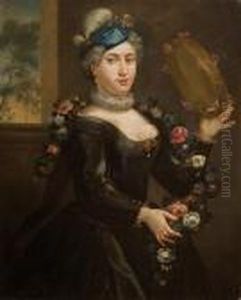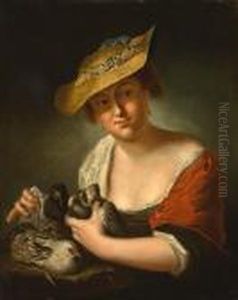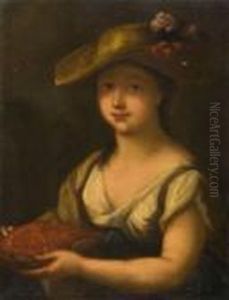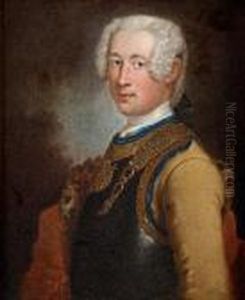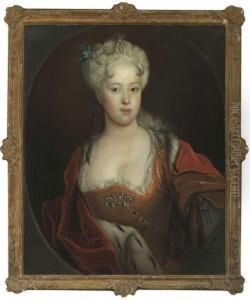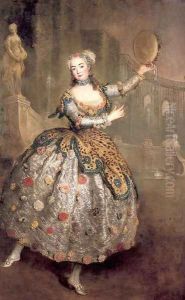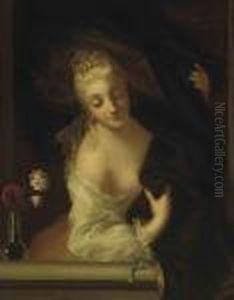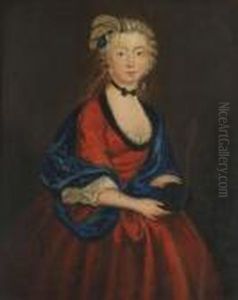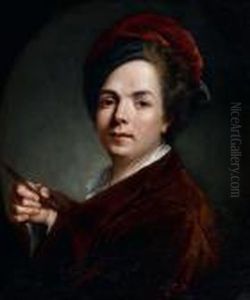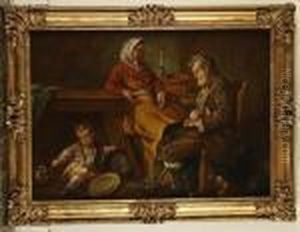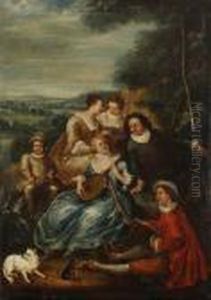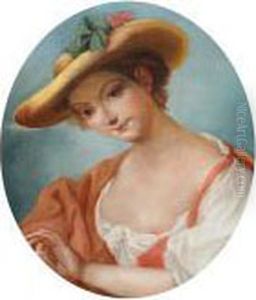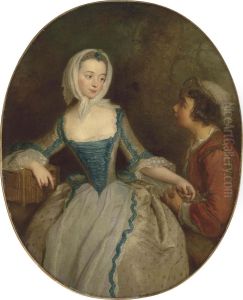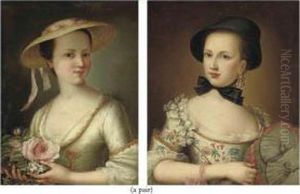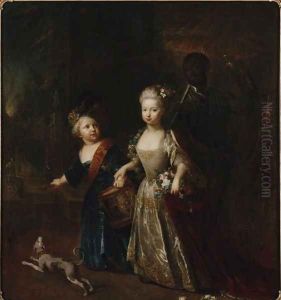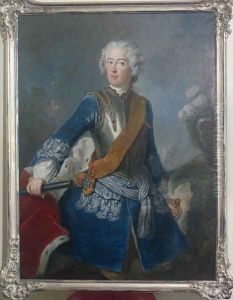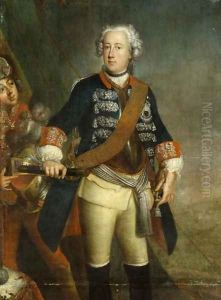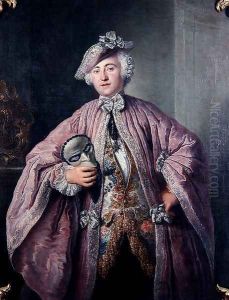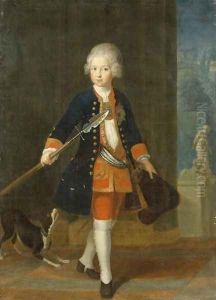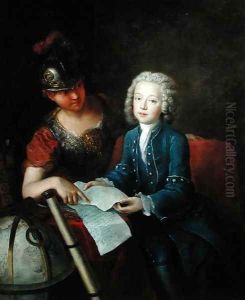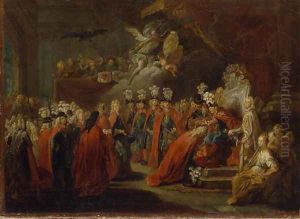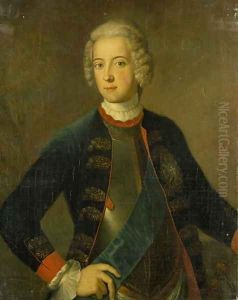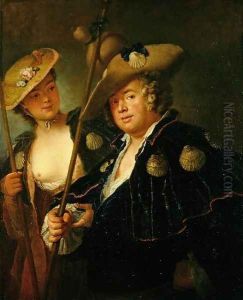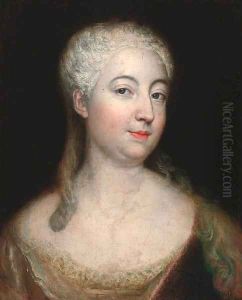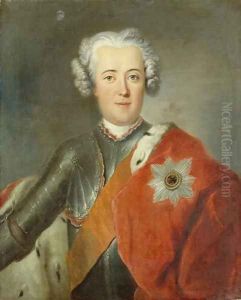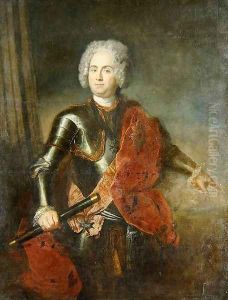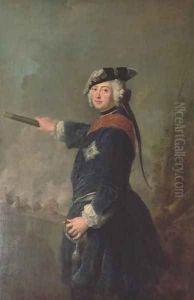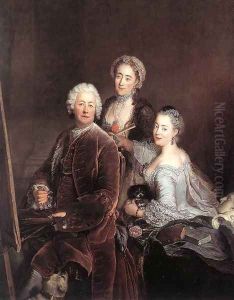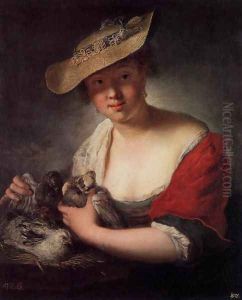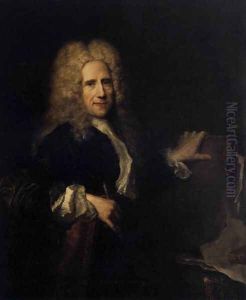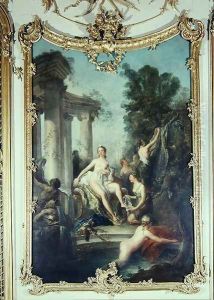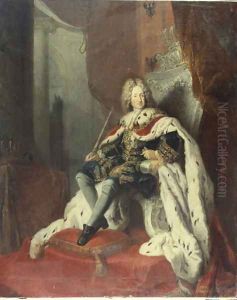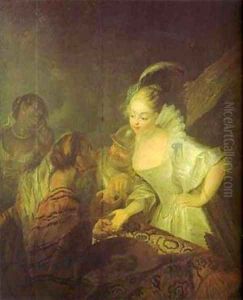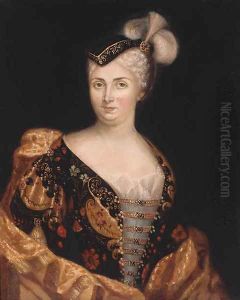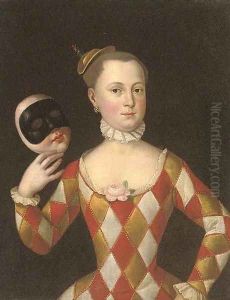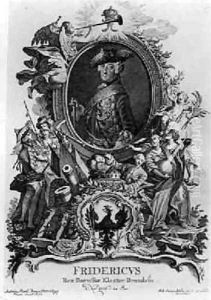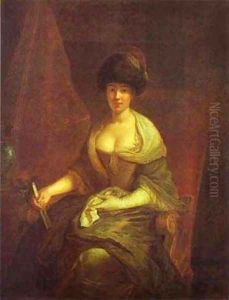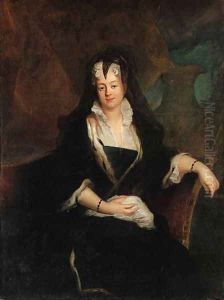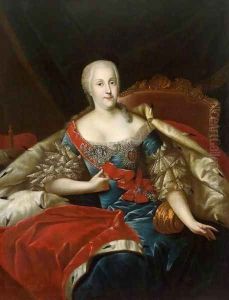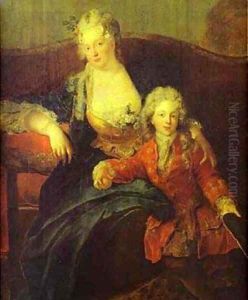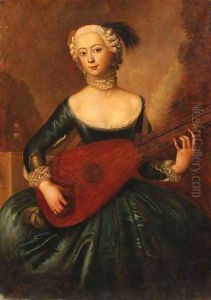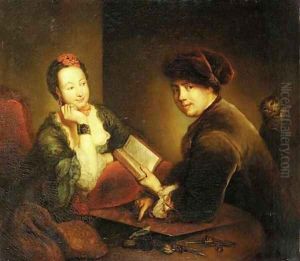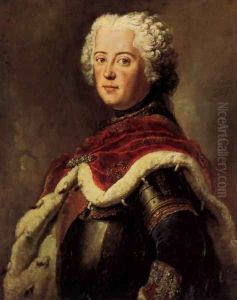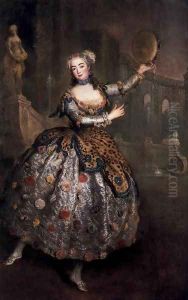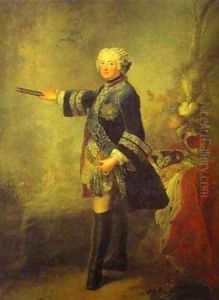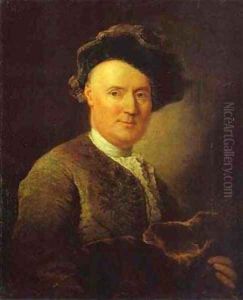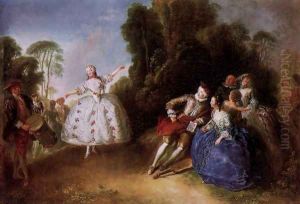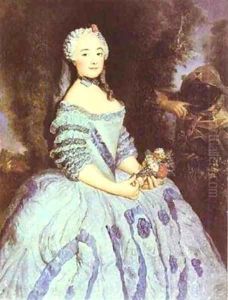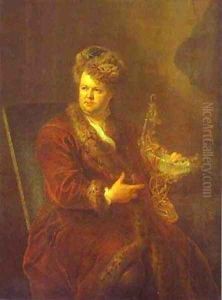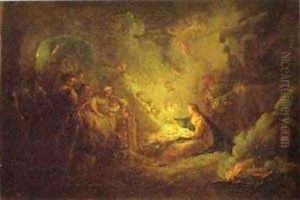Antoine Pesne Paintings
Antoine Pesne was a French Rococo painter who achieved significant success in the courts of Europe, particularly in Prussia. Born on May 29, 1683, in Paris, France, he hailed from a family with artistic ties—his father, Thomas Pesne, and his uncle, Charles de La Fosse, were both painters. Antoine received his early training from his father and later continued his studies at the Académie royale de peinture et de sculpture.
Pesne's talent was recognized early on, and he won the prestigious Prix de Rome, which allowed him to study in Italy. He spent a considerable amount of time in Rome, where he was influenced by the works of the Italian masters and the burgeoning Rococo style. Upon his return to Paris, he became a member of the Royal Academy and was well-received for his portraits and historical paintings.
In 1710, Pesne was invited to the court of Prussia by King Frederick I, where he would eventually settle and spend the majority of his career. He initially worked in Berlin and later in Potsdam, becoming the court painter to Frederick I and later to his son, King Frederick II (Frederick the Great). Pesne's work at the Prussian court encompassed a wide array of subjects, including portraiture, allegorical scenes, and decorative works for palaces such as Sanssouci and Charlottenburg.
Pesne's portraits, in particular, are noted for their delicate coloration, graceful depiction of fabrics, and the relaxed elegance of the sitters. His most famous works include portraits of the Prussian royal family, the nobility, and leading figures of the time. He also created ceiling paintings and other decorative pieces that embodied the Rococo spirit of lightness and frivolity.
Antoine Pesne's influence extended beyond his paintings. He played a significant role in the development of the arts in Prussia and was instrumental in establishing the Prussian Academy of Arts. His legacy as a key figure in the dissemination of French Rococo aesthetics in Northern Europe continued even after his death in Berlin on August 5, 1757. Pesne's artistic style and his contributions to the cultural landscape of his adopted country have cemented his place in art history as one of the leading painters of the Rococo era.
